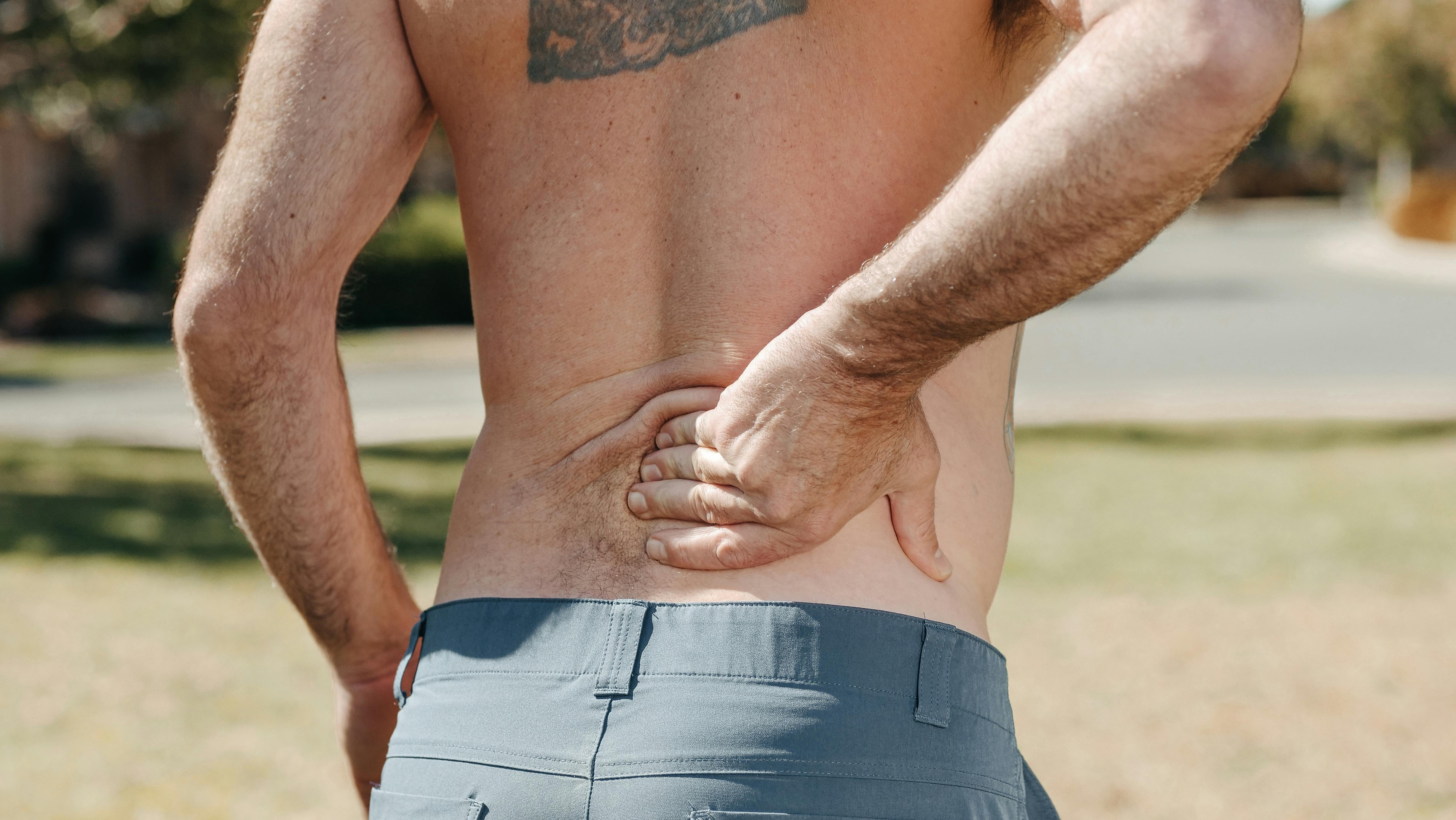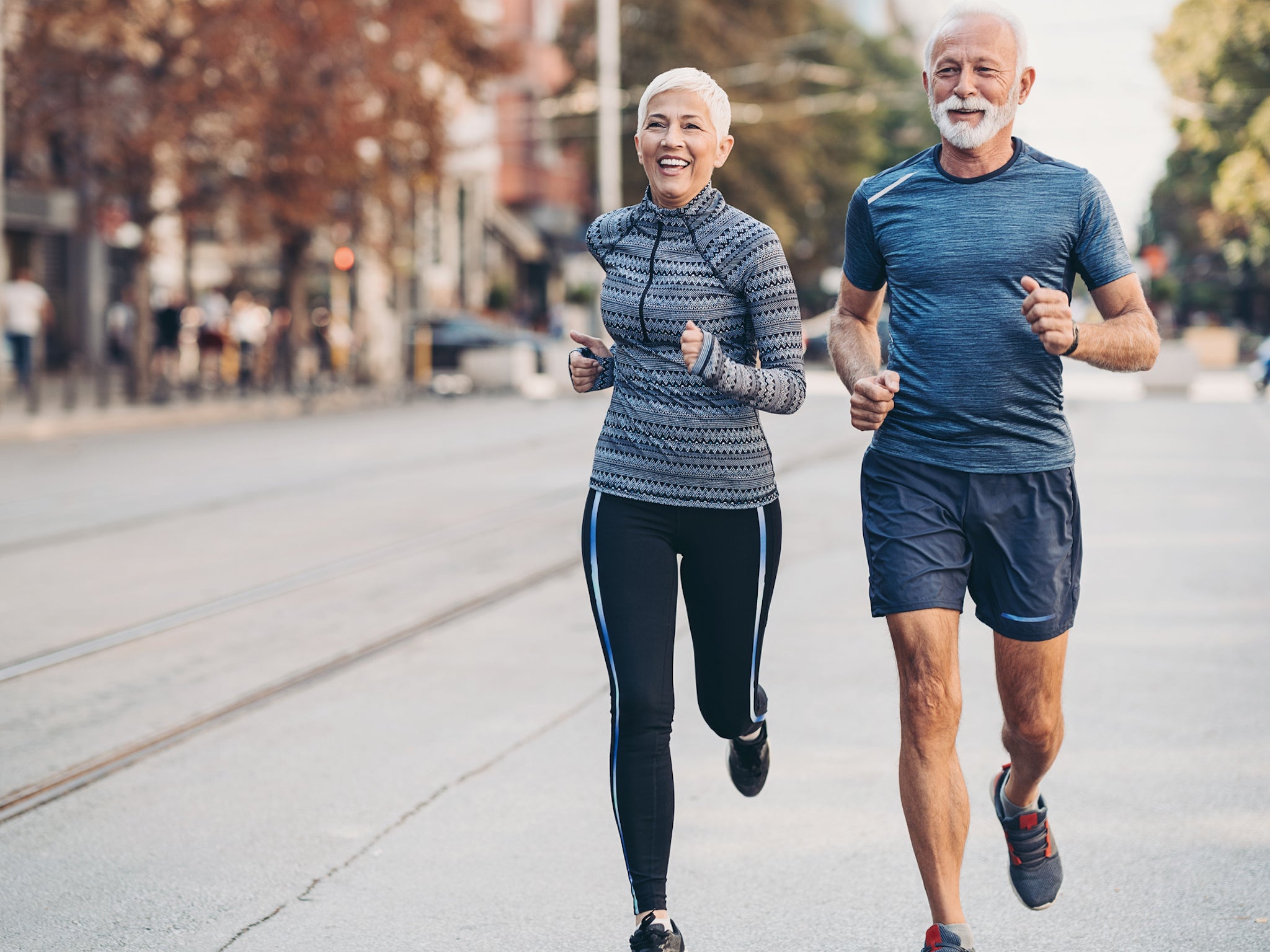As we age, it’s common to notice posture changes: shoulders rounding, head leaning forward, back starting to curve.
You might associate this with older adults and wonder: will this happen to me? Can I prevent it?
It’s sometimes called “hunchback” or “roundback”, but the medical term for a curved back is kyphosis.
When the curve is beyond what’s considered normal (greater than 40 degrees), we refer to this as hyperkyphosis.
In more severe cases, it may lead to pain, reduced mobility and physical function, or lower quality of life.
Here’s how it happens, and how to reduce your risk.

What causes a curved back?
A healthy spine has an elongated s-shape, so a curve in the upper spine is completely normal.
But when that curve becomes exaggerated and fixed (meaning you can’t stand up straight even if you try), it can signal a problem.
One common cause of a curved back is poor posture. This type, called postural kyphosis, usually develops over time due to muscle imbalances, particularly in younger people who spend hours:
- hunched over a desk
- slouched in a chair, or
- looking down at a phone.
Fortunately, this kind of curved back is often reversible with the right exercises, stretches and posture awareness.
Older adults often develop a curved back, known as age-related kyphosis or hyperkyphosis.
This is usually due to wear and tear in the spine, including vertebral compression fractures, which are tiny cracks in the bones of the spine (vertebrae).
These cracks are most often caused by osteoporosis, a condition that makes bones more fragile with age.
In these cases, it’s not just bad posture – it’s a structural change in the spine.

How can you tell the difference?
Signs of age-related hyperkyphosis include:
- your back curves even when you try to stand up straight
- back pain or stiffness
- a loss of height (anything greater than 3-4 centimetres compared to your peak adult height may be considered outside of “normal” ageing).
Other causes of a curved back include:
- Scheuermann’s kyphosis (which often develops during adolescence when the bones in the spine grow unevenly, leading to a forward curve in the upper back)
- congenital kyphosis (a rare condition present from birth, caused by improper formation of the spinal bones. It can result in a more severe, fixed curve that worsens as a child grows)
- scoliosis (where the spine curves sideways into a c- or s-shape when viewed from behind), and
- lordosis (an excessive inward curve in the lower back, when viewed from the side).
In addition to these structural conditions, arthritis, and in rare cases, spinal injuries or infections, can also play a role.
Should I see a doctor about my curved back?
Yes, especially if you’ve noticed a curve developing, have ongoing back pain, or have lost height over time.
These can be signs of vertebral fractures, which can occur in the absence of an obvious injury, and are often painless.
While one in five older adults have a vertebral fracture, as many as two-thirds of these fractures are not diagnosed and treated.
In Australia, the Royal Australian College of General Practitioners and Healthy Bones Australia recommend a spine x-ray for:
- people with kyphosis
- height loss equal to or more than 3 centimetres, or
- unexplained back pain.
What can I do to reduce my risk?
If you’re young or middle-aged, the habits you build today matter.
The best way to prevent a curved back is to keep your bones strong, muscles active, and posture in check. That means:
- doing regular resistance training, especially targeting upper back muscles
- staying physically active, aiming for at least 150 minutes per week
- getting enough protein, calcium, and vitamin D to support bone and muscle health
- avoiding smoking and limiting alcohol to reduce risk factors that worsen bone density and overall wellbeing
Pay attention to your posture while sitting and standing. Position your head over your shoulders and shoulders over your hips. This reduces strain on your spine.

What exercises help prevent and manage a curved back?
Focus on exercises that strengthen the muscles that support an upright posture, particularly the upper back and core, while improving mobility in the chest and shoulders.
In general, you want to prioritise extension-based movements. These involve straightening or lifting the spine and pulling the shoulders back.
Repeated forward-bending (or flexion) movements may make things worse, especially in people with osteoporosis or spinal fractures.
Good exercises include:
- back extensions (gently lift your chest off the floor while lying face down)
- resistance exercises targeting the muscles between your shoulder blades
- weight-bearing activities (such as brisk walking, jogging, stair climbing, or dancing) to keep bones strong and support overall fitness
- stretching your chest and hip flexors to open your posture and relieve tightness.
Flexibility and balance training (such as yoga and pilates) can be beneficial, particularly for posture awareness, balance, and mobility. But research increasingly supports muscle strengthening as the cornerstone of prevention and management.
Muscle strengthening exercises, such as weight lifting or resistance training, reduces spinal curvature while enhancing muscle and bone mass.
If you suspect you have kyphosis or already have osteoporosis or a vertebral fracture, consult a health professional before starting an exercise program. There may be some activities to avoid.
Can a curved back be reversed?
If it’s caused by poor posture and muscle weakness, then yes, it’s possible.
But if it’s caused by bone changes, especially vertebral fractures, then full reversal is unlikely. However, treatment can reduce pain, improve function, and slow further progression.
Protecting your posture isn’t just about appearance. It’s about staying strong, mobile and independent as you age.
Jakub Mesinovic is a Research Fellow at the Institute for Physical Activity and Nutrition, Deakin University
David Scott is an Associate Professor (Research) and NHMRC Emerging Leadership Fellow, Deakin University
This article was originally published by The Conversation and is republished under a Creative Commons licence. Read the original article



